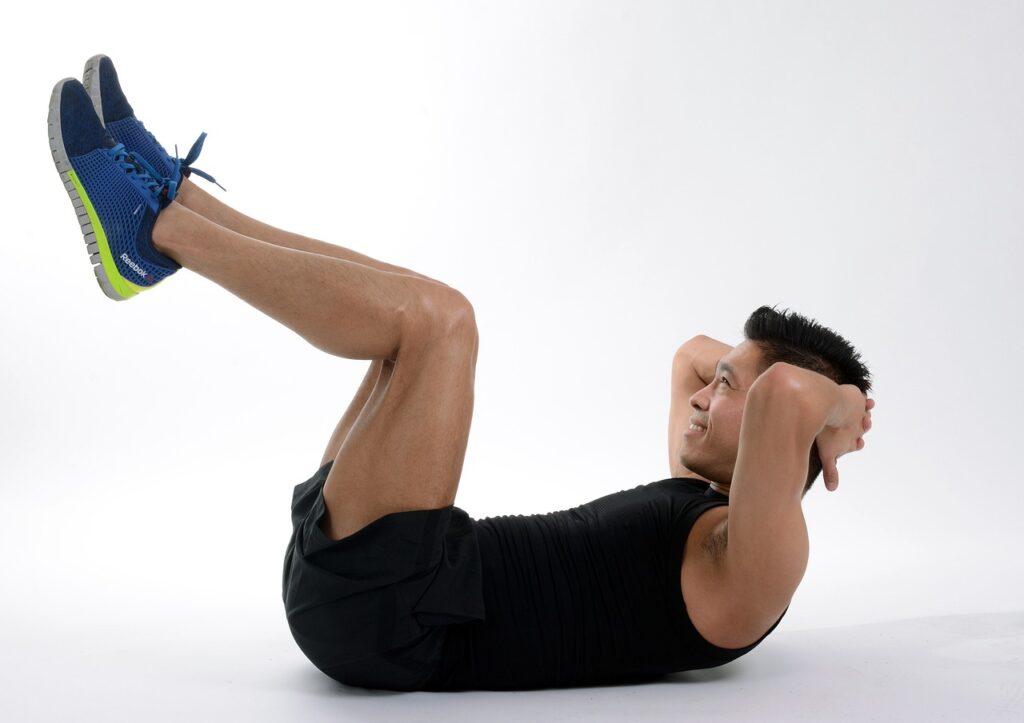Looking to strengthen your core and improve body control? Calisthenics workouts for abs could be the answer.
We explore calisthenics workouts, the importance of abs, and effective training methods like basic crunches, planks, Russian twists, hanging leg raises, and bicycle crunches.
Discover the benefits of training abs with calisthenics, common mistakes to avoid, how often to train, and tips for maximizing your workouts.
Get ready to feel the burn and see results with these effective exercises!
In this article:
- What Are Calisthenics Workouts?
- Why Are Abs Important?
- How To Train Abs With Calisthenics Workouts?
- What Are The Benefits Of Training Abs With Calisthenics Workouts?
- What Are The Common Mistakes When Training Abs With Calisthenics Workouts?
- How Often Should You Train Abs With Calisthenics Workouts?
- What Are Some Tips For Getting The Most Out Of Calisthenics Ab Workouts?
- Frequently Asked Questions
What Are Calisthenics Workouts?
Calisthenics workouts involve using your body weight to perform various exercises that enhance strength, flexibility, and endurance.
These types of workouts are popular due to their focus on functional movements that mimic everyday activities, making them highly effective for overall physical conditioning.
One of the key benefits of incorporating calisthenics into your training routine is that they can be done anywhere, with minimal equipment requirements, making it a convenient option for individuals looking to improve their fitness levels at home or in outdoor settings.
Whether you are a beginner starting your fitness journey or an experienced athlete seeking to enhance your strength and agility, calisthenics can be tailored to suit different levels of ability and can be easily modified to increase or decrease intensity, ensuring that you can progress at your own pace.
Why Are Abs Important?
Strong abs are crucial for overall core strength, stability, and posture, supporting a healthy back and efficient movement.
Developing strong abs plays a vital role in preventing common injuries, as a sturdy core aids in transferring force effectively through the body during physical activities.
By engaging and strengthening the abdominal muscles, individuals can also experience improvements in balance and coordination, allowing for better control and stability in various movements.
Maintaining a solid core contributes to better muscle health, as it fosters proper alignment of the spine and reduces the risk of strain on surrounding muscles.
This interconnected relationship between core strength, overall health, and muscle function underscores the importance of incorporating ab-focused exercises into a well-rounded fitness routine.
How To Train Abs With Calisthenics Workouts?
Training abs with calisthenics workouts involves a variety of exercises like crunches, planks, and leg raises that target different areas of the core.
These exercises can be performed with proper technique to ensure maximum effectiveness. For instance, when doing crunches, focus on engaging the core muscles by lifting the shoulders towards the knees rather than straining the neck.
Progressions can be made by adding resistance bands or increasing repetitions.
Planks can be enhanced by incorporating side planks or adding leg lifts for more challenges. Leg raises can also be advanced by doing hanging leg raises or flutter kicks to intensify the workout.
Basic Crunches
Basic crunches are a fundamental ab exercise that targets the upper abdominal muscles through controlled repetitions and sets.
It is crucial to ensure that each crunch is performed with proper form to effectively engage the targeted muscles. As you execute each crunch, focus on exhaling as you crunch up and inhaling as you lower back down to maintain proper breathing throughout the movement.
Remember to start with a manageable number of repetitions and gradually increase both the sets and repetitions as your core strength improves.
By gradually progressing in repetitions and sets, you can avoid strain or injury while effectively building strength in your abdominal muscles.
Planks
Planks are an isometric exercise that engages the core muscles, promoting strength and stability throughout the midsection.
By holding a plank position, one can effectively target the deep core muscles, including the transverse abdominis and obliques, which are essential for maintaining good posture and reducing the risk of back pain.
Planks help improve overall balance and coordination by requiring muscles throughout the body to work in synergy to hold the position. Variations such as side planks and plank with leg lifts can further challenge different muscle groups while enhancing overall core strength.
Correct form is crucial to maximize the benefits of planks, ensuring a straight line from head to heels and engaging the core by pulling the belly button towards the spine.
Russian Twists
Russian twists target the obliques and enhance core stability and flexibility by engaging the abdominal muscles through rotational movements.
- This exercise involves sitting on the floor with knees bent, leaning back slightly to engage the core, and lifting the feet off the ground for added challenge.
- As you twist from side to side, be sure to keep the back straight and the movements controlled to prevent strain.
- The twisting motion not only strengthens the oblique muscles on the sides of the abdomen but also helps improve overall core flexibility, which is crucial for maintaining proper posture, balance, and stability in various daily activities.
Hanging Leg Raises
Hanging leg raises are compound movements that target the lower abs and enhance overall core strength by lifting the legs while hanging from a bar.
These exercises are particularly effective as they engage multiple muscle groups simultaneously, including the lower abs, hip flexors, and obliques.
By incorporating hanging leg raises into your workout routine, you can improve not only your core strength but also your stability and balance.
Mastering proper form is crucial to avoid straining the lower back and ensure maximum effectiveness.
Consistent practice of this exercise can lead to visible improvements in lower abdominal strength and definition, making it a valuable addition to any strength training regimen.
Bicycle Crunches
Bicycle crunches are dynamic ab exercises that target multiple core muscles simultaneously, improving endurance and muscle definition.
When performing bicycle crunches, it’s crucial to maintain proper form to maximize engagement of the rectus abdominis, obliques, and hip flexors.
To execute them correctly, lie on your back, lift your legs off the ground, and bring your opposite elbow to meet the opposite knee in a cycling motion.
This movement not only strengthens the core but also enhances stability and balance.
The consistent practice of bicycle crunches can lead to increased endurance, help build a stronger core, and sculpt those coveted abdominal muscles.
What Are The Benefits Of Training Abs With Calisthenics Workouts?
Training abs with calisthenics workouts offers numerous benefits such as improved core strength, better posture, and enhanced balance and stability.
By incorporating calisthenics ab exercises into your routine, you not only engage multiple muscle groups simultaneously but also strengthen the deep core muscles that contribute to better posture.
The dynamic nature of calisthenics exercises challenges your balance, leading to improved coordination and stability in daily activities.
Focusing on bodyweight movements in calisthenics helps in building functional strength that translates into better performance in various physical tasks.
These exercises can be modified to suit all fitness levels, making them accessible to individuals at any stage of their fitness journey.
Builds Core Strength
Calisthenics workouts focusing on abs build exceptional core strength through targeted exercises and progressive training methods.
- These bodyweight exercises not only engage the abdominal muscles but also work synergistically with other muscle groups to enhance overall core stability.
- Popular ab exercises in calisthenics include variations of planks, leg raises, mountain climbers, and bicycle crunches.
- Implementing proper form and engaging the core throughout each movement is essential to maximize the effectiveness of these exercises.
As one progresses in their calisthenics journey, incorporating advanced techniques like adding resistance or playing with tempo can further challenge the core muscles and stimulate continuous progressions in strength and endurance.
Improves Posture
Training abs with calisthenics helps enhance posture by strengthening the core muscles that support the spine and promoting flexibility for better body alignment.
A strong core is essential for maintaining proper alignment of the spine, which in turn helps prevent slouching and other postural issues.
By engaging in calisthenics exercises focused on the core, individuals can develop the strength and endurance necessary to support their spine throughout daily activities.
Incorporating exercises that target flexibility can further aid in achieving optimal posture by ensuring that the muscles surrounding the spine are supple and able to move freely without restriction.
Increases Overall Body Control
Abs training with calisthenics enhances overall body control by improving balance, coordination, and proprioception through targeted exercises and balancing techniques.
By focusing on core strength and stability with calisthenics ab workouts, individuals can better engage their deeper core muscles, leading to improved posture and spinal alignment.
Developing a strong core also supports increased stability during dynamic movements and everyday activities, reducing the risk of injury.
Incorporating exercises like planks, leg raises, and mountain climbers challenges the body to maintain equilibrium and control, enhancing not only abdominal strength but also fine-tuning motor skills essential for balance and coordination.
Can Be Done Anywhere
One of the key benefits of training abs with calisthenics is the convenience of performing these exercises anywhere, be it at home, outdoors, or while traveling.
When incorporating calisthenics ab workouts into your routine, you can effortlessly adapt them to different settings, making them ideal for those who prefer the flexibility of home-based workouts.
Not only can you target your core muscles effectively with exercises like planks, leg raises, and bicycle crunches, but you can also customize your routine to match your fitness level and goals.
By integrating these versatile exercises into your daily routine, you can maintain consistency in your training regimen regardless of your location.
What Are The Common Mistakes When Training Abs With Calisthenics Workouts?
Avoiding common mistakes is essential when training abs with calisthenics to ensure effective muscle engagement, injury prevention, and optimal workout results.
One prevalent error in calisthenics ab training is the tendency to sacrifice form for quantity, which can reduce the effectiveness of the exercises and increase the risk of injury.
It’s important to prioritize proper form by maintaining a neutral spine, engaging the core throughout the movement, and avoiding excessive swinging or momentum.
Incorporating variations in your ab exercises can help target different muscle groups and prevent plateaus in progress. Experiment with exercises such as planks, leg raises, bicycles, and hollow body holds to challenge your core from various angles and intensities for a well-rounded workout.
Neglecting Other Muscle Groups
Neglecting to work on other muscle groups while focusing solely on abs in calisthenics workouts can lead to muscle imbalances and compromised functional fitness.
A well-rounded calisthenics routine involves targeting all major muscle groups to ensure balanced muscle development. Ignoring key muscle groups like the back, chest, shoulders, and legs can hinder not only your aesthetic progress but also limit your overall strength and performance.
By incorporating exercises that engage different muscle groups, you create a foundation for improved stability, power, and agility. Emphasizing overall body balance not only reduces the risk of injury but also enables you to progress more effectively in your calisthenics journey.
Not Focusing On Proper Form
Maintaining proper form is crucial in calisthenics ab workouts to target the right muscles effectively, prevent injuries, and optimize training outcomes.
By focusing on technique, individuals can ensure that the abdominal muscles are being properly engaged throughout the exercises. Proper form not only helps in activating the core muscles but also reduces the risk of strain on the lower back.
To maintain good posture during calisthenics workouts, it is important to keep the spine aligned, avoid overarching or rounding the back, and engage the core muscles to stabilize the body.
By consciously checking and correcting posture, individuals can maximize the effectiveness of their ab workouts and minimize the chances of injury.
Not Enough Variation In Exercises
Lack of exercise variation in calisthenics ab workouts can limit muscle growth, plateau progress, and reduce overall workout effectiveness over time.
Engaging in the same set of exercises repeatedly can lead to the body adapting and becoming efficient, resulting in diminished muscle stimulation.
By integrating diverse exercises targeting different areas of the core, one can challenge the muscles in new ways, promoting continuous growth and development.
Progressions, such as increasing resistance or adjusting the difficulty level of the exercises, are crucial for advancing muscle strength and endurance.
Implementing variations like incorporating instability tools, adjusting tempo, or modifying rep ranges can help prevent workout plateaus and keep the muscles constantly adapting and growing.
How Often Should You Do Calisthenics Workout for Abs?

The frequency of training abs with calisthenics depends on individual fitness goals, recovery capacity, and the need for adequate rest between workout sessions.
Consistency is key when it comes to calisthenics workout for abs. It’s important to establish a routine that you can maintain over the long term.
Regularly training your abs with calisthenics exercises not only helps in building a strong core but also aids in improving overall body stability.
When determining your optimal training frequency, consider starting with 2-3 sessions per week and gradually increasing as your strength and recovery capacity improve.
Remember, allowing your muscles to recover and adapt is crucial for progress, so listen to your body and adjust your frequency accordingly.
What Are Some Tips For Getting The Most Out Of Calisthenics Ab Workouts?
To maximize the effectiveness of calisthenics ab workouts, focus on proper form, gradual progressions, and incorporating variety to challenge your core muscles for optimal results.
Ensuring that you maintain good posture throughout each exercise is crucial for engaging the targeted muscles.
Set measurable goals to track your progress, whether it’s increasing the number of reps or holding a plank for longer.
Remember that consistency and dedication are key in seeing results. To keep yourself motivated, switch up your routine regularly by trying different exercises like bicycle crunches, leg raises, and mountain climbers.
By continuously challenging yourself with new movements, you not only prevent plateaus but also keep the workouts exciting and engaging.
Frequently Asked Questions
What are calisthenics workouts for abs?
- Calisthenics workouts for abs are exercises that use only body weight movements to target and strengthen the abdominal muscles.
What are the benefits of doing calisthenics workouts for abs?
- Calisthenics workouts for abs can improve core strength, stability, and balance. They also require no equipment, making them convenient and accessible for everyone.
Which calisthenics exercises are best for targeting the abs?
- Some popular calisthenics exercises for abs include crunches, planks, leg raises, and Russian twists. These movements engage the entire core and can be modified for different fitness levels.
How often should I do calisthenics workouts for abs?
- It is recommended to do calisthenics workouts for abs 2-3 times a week, with rest days in between. It’s important to listen to your body and not overtrain, as proper recovery is crucial for muscle growth.
Can calisthenics workouts for abs help me achieve a six-pack?
- Yes, consistent calisthenics workouts for abs can help you achieve a six-pack by strengthening and defining the abdominal muscles. However, a healthy diet and overall body fat percentage also play a significant role in revealing the abs.
Are calisthenics workouts for abs suitable for all fitness levels?
- Yes, calisthenics workouts for abs can be modified for all fitness levels. Beginners can start with simpler variations and gradually increase the difficulty as they progress. It’s essential to always listen to your body and work within your current capabilities.

